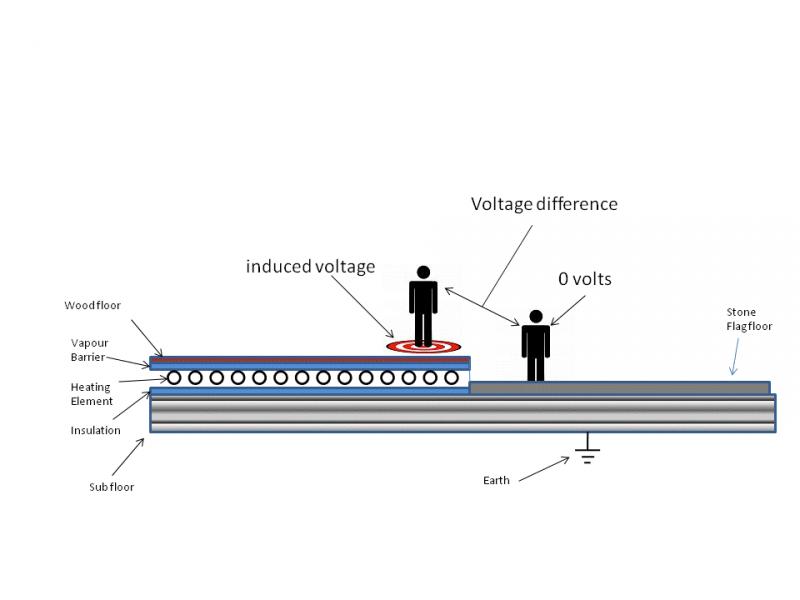- Joined
- 24 Apr 2009
- Messages
- 14
- Reaction score
- 0
- Country

sorry to highjack this thread but looking for assistance and this is the closest related issue I can find.
My friend has ribbon style UFH installed under slate tiles. RCD protected, and RCD is working fine. UFH cables all giving resistance readings within manufacturers range. Earth mesh was not installed as apparently not necessary when not in bathroom (cue 17th edition arguments, but the installation was 3 years ago). There are 5 separate UFH mats covering the floor area in question, and all run off same point.
When the UFH is turned on, and he is wearing socks, but no shoes, and touches any item of plugged in electrical equipment (TV, stereo amp, laptop etc) in the room he gets a small shock (comparable to a static discharge when getting out your car for eg). He has also experienced the same thing when touching another person (his missus says the sex is electric ).
).
When the UFH is off he cannot replicate the shocks, no matter how much he shuffles around in socks.
Apparently the problem has persisted since installation but it seems that now he has finally had enough- hence he's asked me if I can help.
I guess what's written in this thread probably explains it but I'm confused as to why he's getting the shocks when touching class II equipment.
Would be very grateful for an education in this regard.
Thanks in advance.
My friend has ribbon style UFH installed under slate tiles. RCD protected, and RCD is working fine. UFH cables all giving resistance readings within manufacturers range. Earth mesh was not installed as apparently not necessary when not in bathroom (cue 17th edition arguments, but the installation was 3 years ago). There are 5 separate UFH mats covering the floor area in question, and all run off same point.
When the UFH is turned on, and he is wearing socks, but no shoes, and touches any item of plugged in electrical equipment (TV, stereo amp, laptop etc) in the room he gets a small shock (comparable to a static discharge when getting out your car for eg). He has also experienced the same thing when touching another person (his missus says the sex is electric
When the UFH is off he cannot replicate the shocks, no matter how much he shuffles around in socks.
Apparently the problem has persisted since installation but it seems that now he has finally had enough- hence he's asked me if I can help.
I guess what's written in this thread probably explains it but I'm confused as to why he's getting the shocks when touching class II equipment.
Would be very grateful for an education in this regard.
Thanks in advance.


